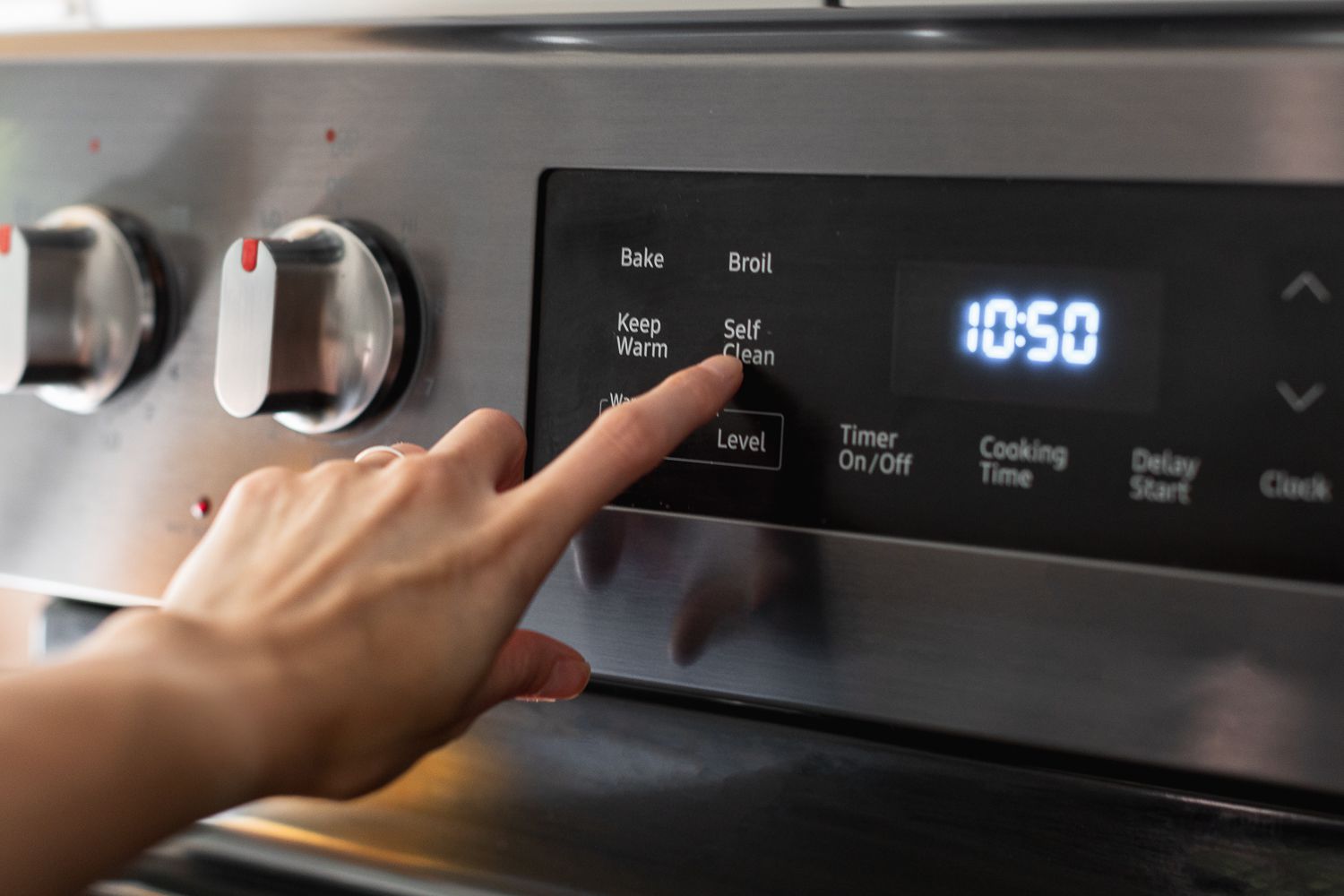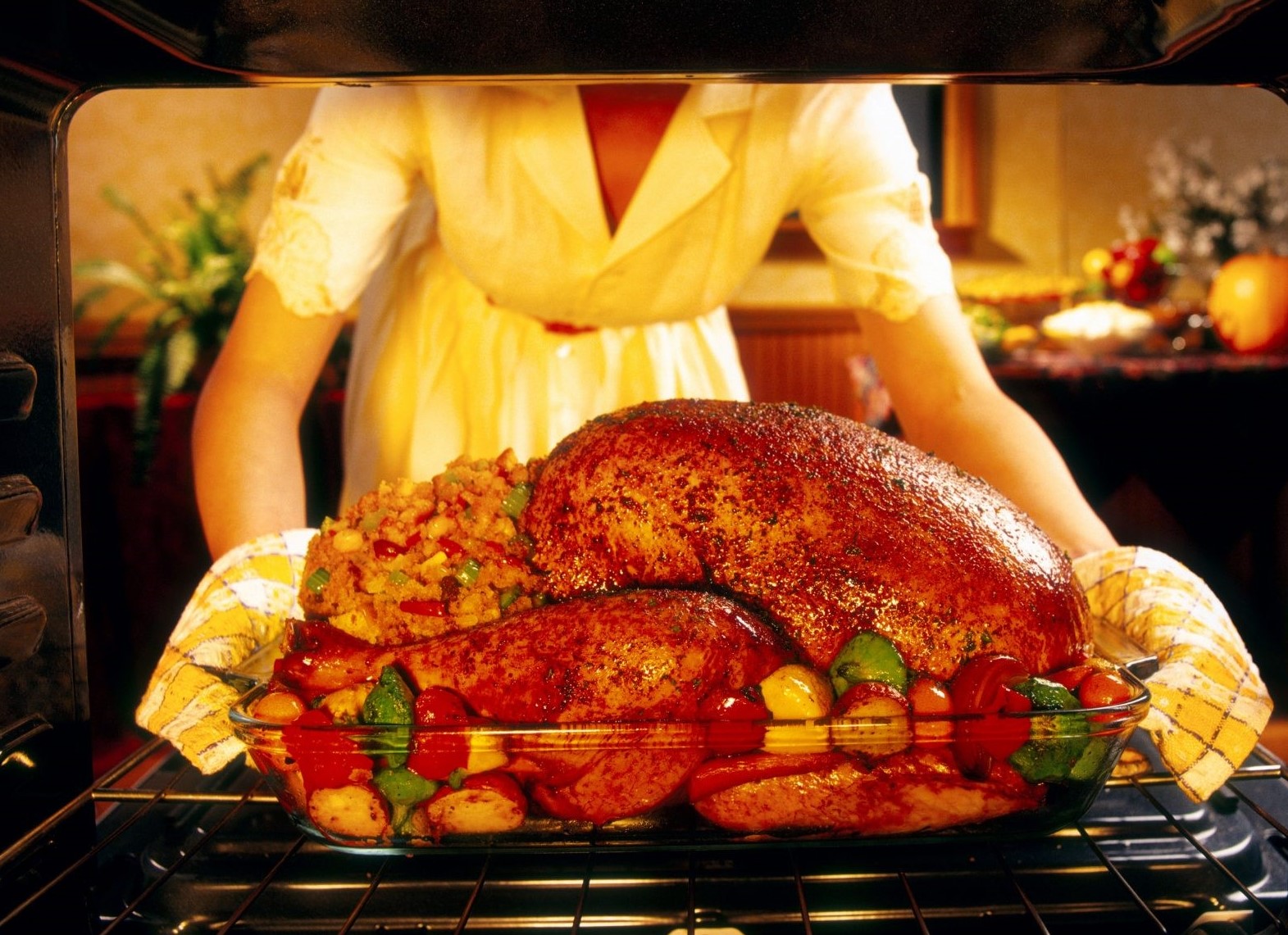Home>Home, Lifestyle & DIY>Effortless Oven Maintenance: Exploring The Advantages Of Self-Cleaning Ovens


Home, Lifestyle & DIY
Effortless Oven Maintenance: Exploring The Advantages Of Self-Cleaning Ovens
Published: February 22, 2024
Discover the benefits of self-cleaning ovens for effortless home maintenance. Explore how this DIY solution can enhance your lifestyle.
(Many of the links in this article redirect to a specific reviewed product. Your purchase of these products through affiliate links helps to generate commission for Temperatures.com, at no extra cost. Learn more)
Table of Contents
Understanding Self-Cleaning Ovens
Self-cleaning ovens are a modern marvel designed to simplify the arduous task of oven maintenance. Unlike traditional ovens, which require manual scrubbing and cleaning agents to remove baked-on food and grease, self-cleaning ovens feature a specialized cleaning cycle that incinerates food residue at extremely high temperatures, reducing it to ash. This innovative process eliminates the need for harsh chemicals and tedious scrubbing, offering a convenient solution for busy homeowners.
The self-cleaning function operates by heating the oven to temperatures upwards of 900 degrees Fahrenheit (482 degrees Celsius), effectively carbonizing any food particles or spills inside the oven cavity. As the temperature climbs, the organic matter disintegrates, leaving behind a fine ash that can be easily wiped away once the cleaning cycle is complete. This automated process not only saves time and effort but also promotes a safer and more eco-friendly approach to oven maintenance by minimizing the use of chemical cleaners.
Self-cleaning ovens are equipped with a durable, heat-resistant interior designed to withstand the extreme temperatures generated during the cleaning cycle. Additionally, the oven door locks automatically during the self-cleaning process to prevent accidental exposure to the intense heat, ensuring the safety of users and minimizing the risk of burns or injuries.
Furthermore, the advanced insulation and ventilation systems of self-cleaning ovens effectively contain and dissipate the high temperatures, preventing the exterior surfaces from becoming dangerously hot. This feature enhances the overall safety of the appliance, providing peace of mind for households with children or pets.
In essence, self-cleaning ovens offer a convenient and efficient solution for maintaining a clean and hygienic cooking environment. By harnessing the power of extreme heat, these innovative appliances simplify the task of oven maintenance, allowing homeowners to enjoy the benefits of a spotless oven without the hassle of manual cleaning.
Benefits of Self-Cleaning Ovens
Self-cleaning ovens offer a myriad of advantages that cater to the needs and preferences of modern homeowners. These innovative appliances have revolutionized the way individuals approach oven maintenance, providing a range of benefits that enhance convenience, safety, and overall cooking experience.
-
Effortless Cleaning: The primary benefit of self-cleaning ovens is the effortless maintenance they offer. With just a simple press of a button, the oven initiates a high-temperature cleaning cycle, eliminating the need for manual scrubbing and harsh chemical cleaners. This not only saves valuable time and effort but also ensures a consistently clean oven interior without the hassle of traditional cleaning methods.
-
Time-Saving Convenience: Self-cleaning ovens are a time-saving solution for busy individuals. The automated cleaning cycle allows users to multitask or attend to other household chores while the oven undergoes the self-cleaning process. This convenience is particularly valuable in today's fast-paced lifestyle, enabling homeowners to maintain a clean oven without dedicating extensive time and energy to the task.
-
Enhanced Safety: The safety features of self-cleaning ovens contribute to their appeal. During the cleaning cycle, the oven door locks automatically, preventing accidental exposure to the extreme temperatures inside. This feature minimizes the risk of burns or injuries, providing peace of mind for households with children or pets. Additionally, the advanced insulation and ventilation systems ensure that the exterior surfaces remain safe to touch, further enhancing the overall safety of the appliance.
-
Eco-Friendly Approach: Self-cleaning ovens promote an eco-friendly approach to oven maintenance. By utilizing high temperatures to carbonize food residue, these appliances eliminate the need for chemical cleaners, reducing the environmental impact associated with traditional cleaning agents. This aligns with the growing emphasis on sustainable living and eco-conscious choices, making self-cleaning ovens a desirable option for environmentally conscious consumers.
-
Consistent Performance: The self-cleaning function of these ovens helps maintain consistent performance and cooking results. By eliminating food buildup and residue, the oven cavity remains free from potential sources of odors and smoke during cooking. This ensures that the oven operates at optimal efficiency, delivering reliable and consistent cooking outcomes for a wide range of culinary endeavors.
In summary, self-cleaning ovens offer a host of benefits that cater to the diverse needs and preferences of modern homeowners. From effortless cleaning and time-saving convenience to enhanced safety and eco-friendly practices, these innovative appliances have redefined the concept of oven maintenance, providing a seamless and rewarding cooking experience for users.
Tips for Maintaining a Self-Cleaning Oven
Maintaining a self-cleaning oven is essential to ensure its optimal performance and longevity. While the self-cleaning function simplifies the process of removing food residue, there are additional steps that can be taken to maximize the effectiveness of this innovative feature and prolong the lifespan of the appliance.
-
Regular Wipe Downs: Even though self-cleaning ovens are equipped with an automated cleaning cycle, it's beneficial to perform regular wipe downs after cooking to remove any visible spills or food particles. This proactive approach helps prevent excessive buildup and ensures that the self-cleaning function can effectively address any remaining residue during its cycle.
-
Use of Mild Cleaners: While the self-cleaning feature eliminates the need for harsh chemical cleaners, using mild, non-abrasive cleaners for spot cleaning can be beneficial. These cleaners can be applied to stubborn stains or areas that require additional attention before initiating the self-cleaning cycle.
-
Avoiding Abrasive Tools: When cleaning the oven manually, it's important to avoid abrasive tools such as steel wool or harsh scouring pads. These can damage the interior surface of the oven, compromising its self-cleaning capabilities and potentially leading to diminished performance over time.
-
Regular Maintenance Checks: Periodically inspecting the oven's gasket, door seal, and interior surfaces is crucial for identifying any signs of wear or damage. A well-maintained gasket and door seal ensure that the oven can effectively contain the high temperatures generated during the self-cleaning cycle, while a clean interior promotes optimal performance.
-
Ventilation Maintenance: Ensuring that the oven's ventilation system is free from obstructions is essential for proper airflow during the self-cleaning process. Clearing any blockages or debris from the vents helps maintain efficient ventilation, allowing the oven to expel heat and fumes effectively during the cleaning cycle.
-
Careful Placement of Cookware: When using the self-cleaning function, it's important to remove all cookware, oven racks, and accessories from the oven. This allows the heat to circulate evenly throughout the interior, ensuring thorough cleaning and preventing potential damage to the removed items.
By implementing these maintenance tips, homeowners can optimize the performance and longevity of their self-cleaning ovens, ensuring that they continue to provide efficient and convenient cooking experiences for years to come.
Common Misconceptions about Self-Cleaning Ovens
Despite the numerous benefits and convenience offered by self-cleaning ovens, several common misconceptions persist, leading to misunderstandings about their functionality and maintenance. Addressing these misconceptions is essential for homeowners to make informed decisions and fully appreciate the value of these innovative appliances.
-
Complete Elimination of Manual Cleaning: One prevalent misconception is that self-cleaning ovens eliminate the need for manual cleaning altogether. While the self-cleaning function significantly reduces the effort required for maintenance, it may not address all stubborn stains or heavily baked-on residue. Occasional manual spot cleaning may still be necessary to ensure a pristine oven interior.
-
Potential Odor during Cleaning Cycle: Some individuals believe that the self-cleaning cycle of ovens produces unpleasant odors that can permeate the kitchen and surrounding areas. While it's true that the high temperatures used during the cleaning process can lead to the combustion of food residue, resulting in a faint odor, proper ventilation and airing out the kitchen can effectively mitigate any lingering smells.
-
Damage to Oven Components: There is a misconception that the extreme heat generated during the self-cleaning cycle can cause damage to the oven's internal components, particularly the heating elements and control panel. In reality, self-cleaning ovens are designed to withstand the high temperatures of the cleaning cycle, and the materials used in their construction are specifically chosen for their heat resistance.
-
Energy Inefficiency during Cleaning Cycle: Some homeowners express concerns about the energy consumption of self-cleaning ovens during the cleaning cycle, assuming that the high temperatures result in excessive energy usage. However, modern self-cleaning ovens are engineered to optimize energy efficiency, and the cleaning cycle typically lasts for a few hours, minimizing any significant impact on overall energy consumption.
-
Limited Lifespan due to Self-Cleaning Function: A common misconception is that the self-cleaning feature accelerates the wear and tear of the oven, leading to a shortened lifespan. In reality, when used according to the manufacturer's guidelines, the self-cleaning function is designed to enhance the longevity of the oven by effectively managing food residue and maintaining a clean interior, ultimately contributing to its durability.
By dispelling these misconceptions and gaining a comprehensive understanding of the capabilities and limitations of self-cleaning ovens, homeowners can fully embrace the convenience and efficiency offered by these modern appliances.
Comparing Self-Cleaning Ovens to Traditional Ovens
When comparing self-cleaning ovens to traditional ovens, several key differences and advantages come to light, highlighting the transformative impact of self-cleaning technology on oven maintenance and convenience.
Cleaning Process:
Traditional ovens necessitate manual cleaning, often involving the use of chemical cleaners and vigorous scrubbing to remove baked-on food and grease. In contrast, self-cleaning ovens feature an automated cleaning cycle that utilizes high temperatures to carbonize food residue, reducing it to ash. This fundamental distinction eliminates the labor-intensive and time-consuming nature of manual cleaning, offering a hassle-free solution for maintaining a clean oven interior.
Time and Effort:
The manual cleaning process of traditional ovens demands significant time and effort, requiring meticulous attention to detail and the use of cleaning agents. Conversely, self-cleaning ovens streamline the maintenance process, allowing users to initiate the cleaning cycle with the press of a button and attend to other tasks while the oven autonomously addresses food residue. This time-saving convenience aligns with the demands of modern lifestyles, providing a practical solution for busy individuals.
Safety Features:
Self-cleaning ovens incorporate safety features that are absent in traditional ovens. During the cleaning cycle, the oven door locks automatically, preventing accidental exposure to the extreme temperatures inside. This feature minimizes the risk of burns or injuries, particularly in households with children or pets. Additionally, the advanced insulation and ventilation systems of self-cleaning ovens ensure that the exterior surfaces remain safe to touch, enhancing overall safety.
Environmental Impact:
Traditional oven cleaning often involves the use of chemical cleaners, presenting environmental concerns and potential health risks associated with exposure to harsh cleaning agents. In contrast, self-cleaning ovens promote an eco-friendly approach to maintenance by minimizing the reliance on chemical cleaners. The high-temperature cleaning cycle effectively eliminates the need for such agents, aligning with sustainable living practices and reducing the environmental impact of oven maintenance.
Consistent Performance:
Self-cleaning ovens contribute to consistent performance and cooking results by eliminating food buildup and residue. This ensures that the oven operates at optimal efficiency, delivering reliable cooking outcomes. In contrast, traditional ovens may experience performance fluctuations due to the accumulation of food residue, potentially impacting the quality of cooked dishes.
In essence, the comparison between self-cleaning ovens and traditional ovens underscores the transformative benefits of self-cleaning technology, offering a compelling alternative to labor-intensive and environmentally impactful manual cleaning methods.













